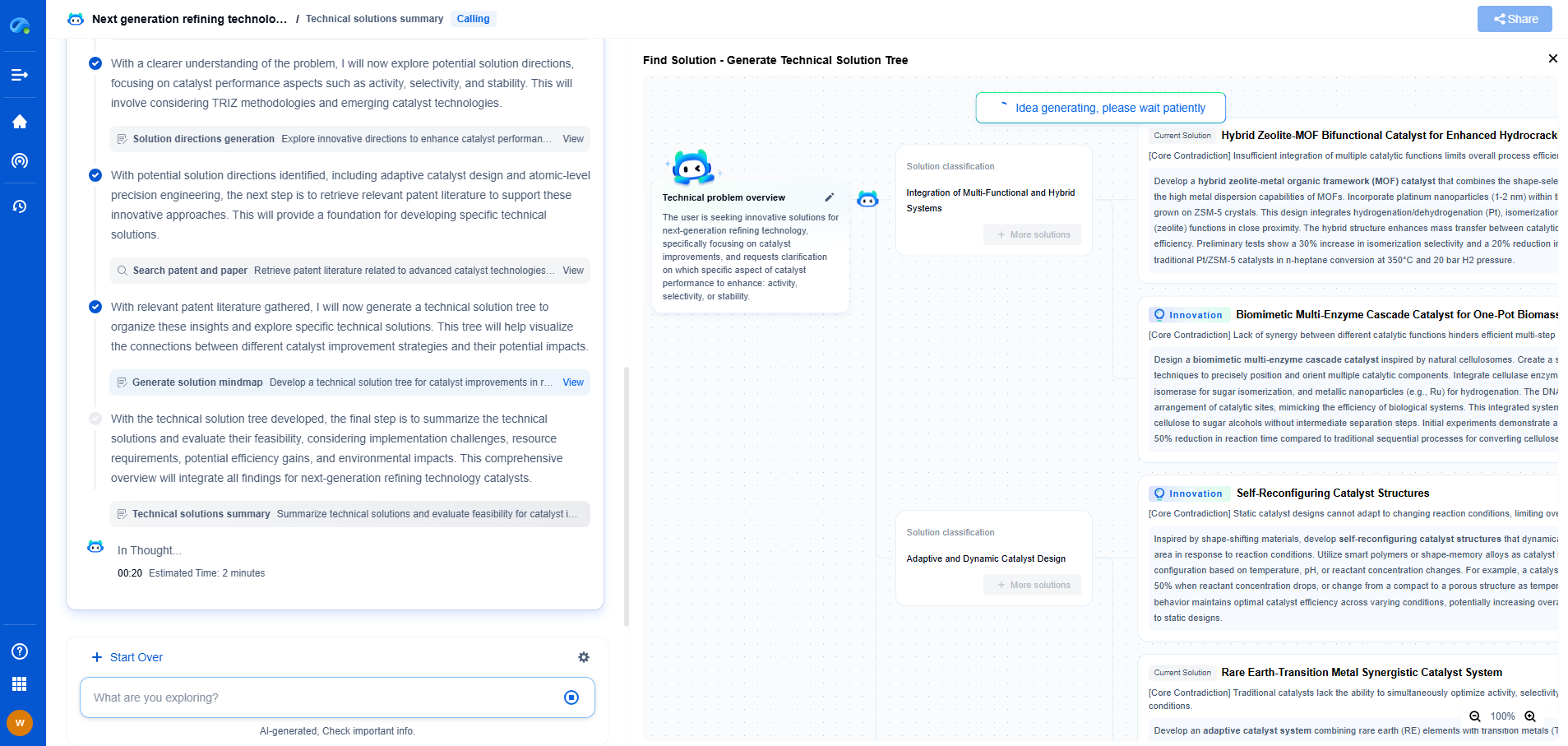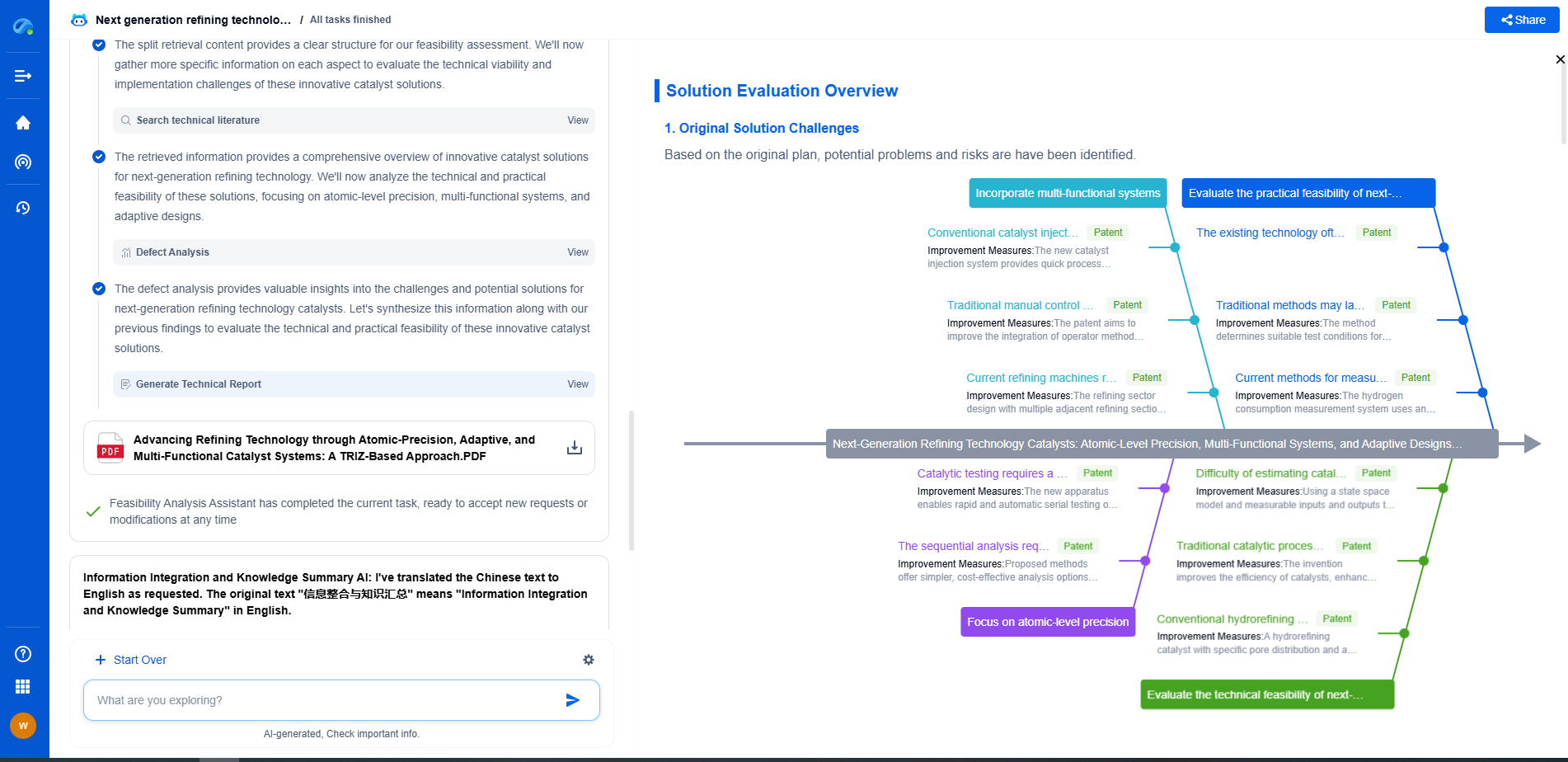Understanding Pressure Ranges: Low-Pressure vs. High-Pressure vs. Vacuum Sensors
JUL 14, 2025 |
Defining Pressure Sensors
Pressure sensors are devices designed to measure the pressure of gases or liquids. They convert physical pressure into an electrical signal that can be measured. The pressure is typically expressed in units such as pascals, psi, or bar. These sensors are essential in monitoring and controlling pressure in various applications, from automotive to aerospace to medical devices. Understanding the types of pressure sensors and their respective ranges is crucial for selecting the appropriate sensor for a given application.
Low-Pressure Sensors: Applications and Advantages
Low-pressure sensors are designed to measure pressures typically below 1 psi, although the specific range can vary depending on the application. These sensors are highly sensitive and are often used in applications where precise pressure measurements are critical. Common uses include HVAC systems, clean rooms, and medical respiratory equipment.
One of the primary advantages of low-pressure sensors is their ability to detect slight pressure changes, making them invaluable in scenarios where maintaining a specific pressure is crucial. For instance, in HVAC systems, low-pressure sensors help regulate airflow to maintain desired environmental conditions efficiently.
High-Pressure Sensors: Robustness and Utility
In contrast, high-pressure sensors are engineered to measure pressures that can exceed several thousand psi. These sensors are essential in industries where systems operate under extreme conditions, such as oil and gas exploration, hydraulic systems, and industrial machinery.
High-pressure sensors are built to withstand harsh environments and significant stress, ensuring reliable performance under demanding circumstances. Their robust design often includes materials capable of resisting corrosion, vibrations, and temperature fluctuations, thereby ensuring longevity and accuracy in challenging applications.
Vacuum Sensors: Operating in Negative Pressure
Vacuum sensors, or negative pressure sensors, are specifically used to measure pressures below atmospheric pressure. They are crucial in applications such as vacuum packaging, semiconductor manufacturing, and scientific research, where maintaining a vacuum or low pressure is essential to the process.
These sensors can detect even the slightest variations in pressure, ensuring that the desired vacuum levels are maintained consistently. Their ability to operate in low-pressure environments makes them indispensable in industries requiring precise control over vacuum conditions.
Selecting the Right Sensor
Choosing the correct pressure sensor involves understanding the specific requirements of the application. Factors such as the range of pressure to be measured, environmental conditions, and the level of accuracy required must be considered when selecting a sensor. It's crucial to consult with manufacturers or experts to ensure the chosen sensor meets the operational and safety needs of the application.
Conclusion
Pressure sensors, whether for low, high, or vacuum applications, are vital components in a wide array of industries. They ensure systems run smoothly, safely, and efficiently, making them indispensable tools in modern technology. Understanding the differences between these sensors and their respective pressure ranges is essential for selecting the right sensor for any particular application, thereby optimizing performance and ensuring safety.
From 5G NR to SDN and quantum-safe encryption, the digital communication landscape is evolving faster than ever. For R&D teams and IP professionals, tracking protocol shifts, understanding standards like 3GPP and IEEE 802, and monitoring the global patent race are now mission-critical.
Patsnap Eureka, our intelligent AI assistant built for R&D professionals in high-tech sectors, empowers you with real-time expert-level analysis, technology roadmap exploration, and strategic mapping of core patents—all within a seamless, user-friendly interface.
📡 Experience Patsnap Eureka today and unlock next-gen insights into digital communication infrastructure, before your competitors do.
- R&D
- Intellectual Property
- Life Sciences
- Materials
- Tech Scout
- Unparalleled Data Quality
- Higher Quality Content
- 60% Fewer Hallucinations
Browse by: Latest US Patents, China's latest patents, Technical Efficacy Thesaurus, Application Domain, Technology Topic, Popular Technical Reports.
© 2025 PatSnap. All rights reserved.Legal|Privacy policy|Modern Slavery Act Transparency Statement|Sitemap|About US| Contact US: help@patsnap.com

